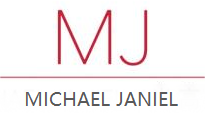T-Shirt Printing Cost Analysis: How to create a hit product with the best budget?
Abstract
In today’s booming market for personalized customized T-shirts, understanding the cost structure of T-shirt printing has become the key to brand success.T-Shirt Printing Cost Analysis Data shows that the global customized clothing market is expected to reach US$51.85 billion in 2027, with an annual growth rate of 6.1% (Grand View Research). This article will deeply analyze the 10 key factors that affect T-shirt printing costs, including fabric selection, printing process, order quantity, etc., and provide professional cost optimization solutions to help you create a market hit at the most competitive price.
I. Commercial value of personalized customization
1.1 Personalized demand drives market growth
Argument: • According to a 2023 Statista survey, 67% of consumers are willing to pay extra for personalized products • The annual search volume of customized T-shirts on e-commerce platforms has increased by 23% (Google Trends data) • Case: A trendy brand achieved a 300% increase in monthly sales through customized slogan T-shirts
1.2 The best carrier for brand marketing
Argument: • T-shirts printed with brand LOGO increase brand recognition by 58% (Nielsen survey) • Each customized T-shirt is equivalent to 2,000 brand exposures (equivalent calculation of outdoor media)
II. 10 core factors affecting printing costs
2.1 Number of orders: significant scale effect
Data comparison: | Order volume | Unit price (USD) | Cost advantage | |——–|————-|———-| | 1-49 pieces | 30-50 | Base price | | 50-99 pieces | 15-20 | 40% price reduction | | 100+ pieces | 5-10 | 80% price reduction |
Case: A certain online celebrity brand controlled the unit cost at 6.8 USD by 500 pieces, and the profit margin reached 220%
2.2 Fabric selection: cost difference of 300%
Cost analysis: • 100% cotton: basic style $3-5/piece, moisture-absorbing and breathable but easy to shrink • Polyester-cotton blended: $4-6/piece, strong wrinkle resistance, suitable for large quantities • Organic cotton: $8-12/piece, large premium space • Tri-blend: $7-9/piece, best value for money
Professional advice: Combed cotton is the first choice for summer, CoolMax functional fabric is recommended for sports series
2.3 Printing process: from screen to digital
T-Shirt Printing Cost Analysis Process comparison table: | Process type | Applicable quantity | Cost range | Features | | Screen printing | 100+ pieces | $1.5-3/color | Rich colors, suitable for large quantities | | DTG direct injection | 1-50 pieces | $5-8/piece | No minimum order quantity, good gradient effect | | Thermal transfer | 50-200 pieces | $3-5/piece | Long-lasting pattern, optimal solution for medium quantities | | Embroidery | Any quantity | $6-15/piece | High-end texture, first choice for brand logos |
2.4 Design complexity
Cost impact: • Single-color design: base price • Four-color printing: +30% cost • Special process (hot stamping/3D effect): +50-80% cost
2.5 Size specifications
Cost difference: • Standard size: base price • Special size (larger/longer): +15-25% • Children’s clothing series: -20% (material saving)
III. Practical strategies for cost optimization
3.1 Golden rule of bulk purchase
Calculation formula: Optimal order quantity = √(2×annual demand×single order cost) ÷ warehousing cost
Case: For a brand with annual sales of 10,000 pieces, the best single order quantity is 387 pieces
3.2 Process combination plan
Recommended combination: • Basic style: screen printing + polyester-cotton blend (cost $4.2/piece) • Limited edition: DTG + organic cotton (cost $14/piece, selling price $49)
3.3 Supply chain management
Cost reduction methods: • Centralized procurement of fabrics: save 8-12% • Localized production: logistics costs reduced by 35%
Fourth, market pricing strategy
4.1 Premium space analysis
Pricing formula: Suggested retail price = (production cost × 2.5) + brand premium
Case comparison: | Cost | Conventional pricing | Fashion brand pricing | |——|———-|———-| | $6 | $15 | $45-60 |
4.2 Seasonal pricing strategy
Data reference: • Off-season (January-March): 15% price reduction promotion • Peak season (June-August): 20-30% premium
V. Summary and action suggestions
- Mass production is the core of cost reduction, and it is recommended to order 100 pieces
- Polyester-cotton blended fabrics have the highest cost-effectiveness, and organic cotton is suitable for high-end lines
- Screen printing is most suitable for start-up brands, and DTG meets small-batch trial sales
- Product differentiation through process combination
- Adopt dynamic pricing strategy to maximize profits
T-Shirt Printing Cost Analysis Immediate action: Contact professional T-shirt manufacturers to obtain free cost calculation, and the first batch of orders can enjoy 15% new customer discount!

